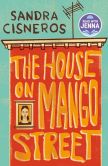Parched – Mark Oshiro
Good morning, and welcome to the first in a series of guest blog posts about representation. My plan is to run a week of guest posts, take a break, and then do a second week. My thanks to everyone who offered to write something for this series.
Kicking things off is the Hugo-nominated Doer-of-Stuff Mark Oshiro. (I don’t know what the context was for Mark’s photo down below, but any class where you’re diagramming Harry Potter is a class I want to take!)
And make sure you come back for tomorrow’s essay by author Katharine Kerr.
The first time my brother and I saw a trailer for Aladdin in 1992, my brother became convinced that we were related to him.
We were eight years old, just about to leave our home in Boise, Idaho for a long trip down to Riverside, California, a relocation prompted by my dad’s job. We stopped at a Mexican diner off the 395 in Adelanto during a rain storm, and, sopping wet, my brother and I had our first taste of Mexican food in our entire lives. (Even at eight years old, we knew the Taco John’s in Boise wasn’t real Mexican food.) When one of the cooks came out of the kitchen to talk to our waitress, we stared at him, and my brother whispered to my mom, “Maybe that’s our father.”
She gave him a serious scowl and told him to keep eating, but she otherwise ignored what he said. We had been told early on that we were adopted; there was no hiding it, really, since our mother was pale and our father was a dark-skinned Hawaiian/Japanese man. When our mom dropped us off at school in her 1987 Ford Aerostar, always reminding us not to slam the door, it wouldn’t take long for the questions to start.
“Where are you from?”
“Why don’t you look like your mom?”
“If you’re Mexican, why don’t you speak Mexican?”
From other children, it mostly felt harmless. They were curious, and we were curious, too, since we didn’t exactly know much about where we’d come from. We just knew that our brown skin and jet black hair made us stand out. Everyone around us was white. It was just how it was.
My brother saw Aladdin and assumed that we were from Agrabah, that if we just traveled there we would find our real parents and we could fly anywhere we wanted on our carpets and we could go on adventures with our genies, and we would look like everyone else around us. My mom would try to shush my brother whenever he went through one of these “phases,” as she referred to it. His last phase?
Speedy Gonzales.
I admit that I, too, believed that the horrifically racist stereotype that was Speedy Gonzales was the quintessential representation for me when I was kid. It wasn’t hard for my brother and I to imitate his accent or to ask to dress up as him for Halloween. We never got to, despite that we tried to convince our mother that we looked just like him. We had the skin tone, the wavy black hair, the speed. No, she’d tell us, I don’t want my kids dressing up like Mexicans.
It took years for me to realize why those comments hurt so much.
Years later, as our family had comfortably set in to our obsession with The X-Files, my brother and I watched as, to our shock, actual Latin@ actors and actresses walked onto the screen. It was January 12, 1997, and and we were ecstatic over the fact that our favorite show in the world was finally addressing a cultural myth we were very familiar with: el chupacabra. And then, to our sheer disappointment, we were heartbroken to watch nearly every stereotype we’d ever heard about Mexicans play out on screen. They were lazy. They were overdramatic. They stole jobs away from good Americans. (But somehow were still lazy?) They were too sexual.
Our parents and our sister laughed at them. They called the men stupid, they made comments about how no one should care about these people because they were all just “illegals” anyway, and by the end, we just slunk off to our rooms, defeated.

The truth is, science fiction and fantasy never made me feel better about myself growing up. I loved Star Wars, but when I told a classmate in third grade that I wanted to be Han Solo, he replied, “But you can’t. You have to be a jawa.” I believed him. When I was assigned to read 1984, I quietly fumed at the idea that an all-white, all-straight future is what terrified people. Meanwhile, I had been threatened with deportation, followed by the police, and was silently suffering in the conservative, homophobic environment I lived in every day. That dystopic world? I was already living in it.
I spent most of my twenties reading fiction that reflected the real world because I was desperate for some sort of connection to other people. I’m sure being adopted and being queer played a large part in that, but when you’ve spent your whole life in the desert, it’s hard not to be used to being thirsty. For me, the science fiction and fantasy that I’ve grown to love doesn’t necessarily allow me to perfectly project myself in the narrative. No, it instead offers me a chance to believe that in the futures that we imagine, in the worlds that we create, there’s still room for a brown queer kid who is lost and parched.
Mark Oshiro runs the Hugo-nominated websites Mark Reads and Mark Watches. When he’s not crying on camera for other people’s amusement, he’s working on his first novel and trying to complete his quest to pet every dog in the world.






